The United Nations takes over.....Formation & Deployment
At the start of 1964, Britain was militarily stretched by actions in Aden and East Africa and declared itself unwilling to act indefinitely as policeman.
In the light of these issues, the 'London Conference' was organised for the 15th January 1964.
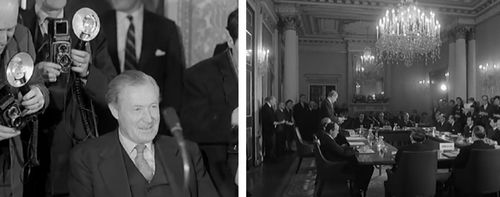
Duncan Sandys addressing the London Conference at Marlborough House in January 1964
Duncan Sandys, once more in the chair, stressed the urgency of finding a workable solution to the island's problems.
Both sides initially presented their own view in extreme form but, following separate talks at Chequers, there were signs of compromise.
Unfortunately, after the Chequer's talks, the Greek Cypriot leader was recalled to Nicosia and the Turkish Cypriot leader was summoned to Ankara.
Both delegations then returned to their previous hard-line and the conference broke up in mutual recrimination and increased hostility.
Fighting between the communities spread from the capital to Limassol, Paphos and other areas.
Alarmed by these developments, Britain proposed a NATO led peacekeeping force but this was considered unacceptable by President Makarios.
After much debate and behind the scenes negotiations, it was agreed on the 4th March 1964 that a multinational United Nations peacekeeping force would be sent to the island.

U Thant announces the unanimous adoption of Resolution 186 on the 4th March 1964
On the 6th March 1964 Indian Army General Gyani was named as Commander of the UN force with General Carver as his deputy.
After only a few days in Cyprus, General Gyani flew back to India for personal reasons and didn't return to the island until the 25th March 1964.
UNFICYP (United Nations Peacekeeping Force in Cyprus) became formally operational on the 27th March 1964 with a three month mandate.
The mandate of UNFICYP was originally defined as, "…in the interest of preserving international peace and security, to use its best efforts to prevent a recurrence of fighting and, as necessary, to contribute to the maintenance and restoration of law and order and a return to normal conditions."
A few days after the UN resolution, the Canadian aircraft carrier "HMCS Bonaventure" arrived at the Famagusta docks.
The carrier, which brought a further 95 officers to join the Canadian contingent also carried 16 Ferret armoured cars, 36 trucks and trailers and 160 tons of stores for the Canadian troops.
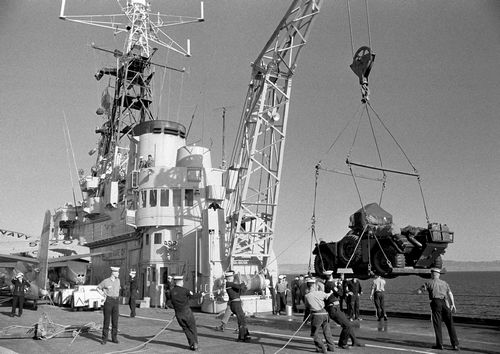
A Ferret armoured car is unloaded from the Canadian aircraft carrier in the Famagusta docks.........dated 30th March 1964
A silent video showing the arrival and early deployment of Canadian UN troops.....courtesy of Pathé News
Until the UN force (comprising troops and civilian police) was operational, British troops wore the 'Blue Beret' and patrolled alone.
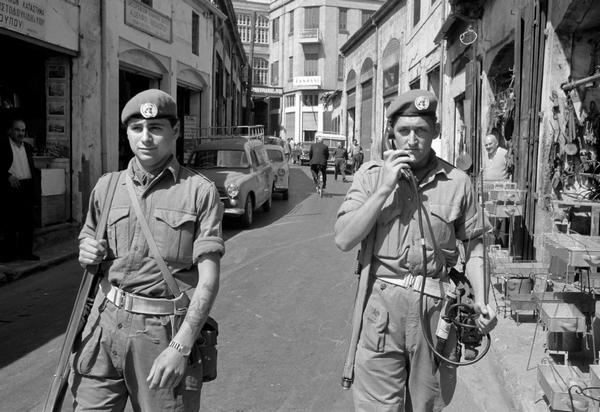
British UN troops patrol along Hermes Street in central Nicosia.........dated March 1964
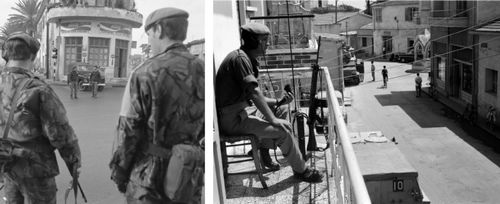
British UN troops patrolling the Turkish quarter and an Observation Point in Limassol.......dated April 1964
The 'Blue Berets' were deployed all across the island in areas of close military confrontation (not just in the Nicosia area). Observation Posts and mobile patrols were used in areas of intercommunal sensitivity (such as the few remaining mixed villages) and close liaison was maintained with all levels of both communities.
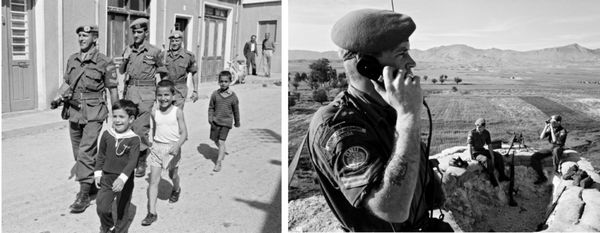
Canadian UN troops patrol Kyrenia and observe from Trakhomas (Trachonas) at the northern edge of Nicosia